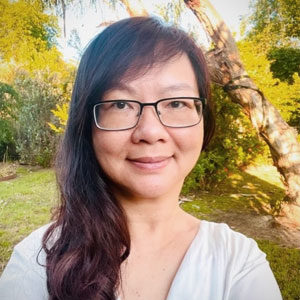“The unexamined life is not worth living,” Socrates famously said. Spiritual companionship, an ancient practice involving deep listening and discerning the movement of the Spirit in a sacred space, is not only a way to examine a life that is worth living, but also a life reflecting the glory of God as the image bearer. In essence, it is a crucial path for Christian discipleship and spiritual formation.
The principle of spiritual companionship entails attentively listening to the stories of pilgrims, reflecting their experiences back to them, and discerning who God is, where God is at work and what God’s will is. Storytelling is a dance and dialogue between a director and a pilgrim. Margaret Guenther’s analogy of a tango highlights that it takes two to shape and form the story.1 Active listening is not static, nor should it be confused with a chat. There is also a fine line between being a “primary listener” and “a participant in her own right.”2 Ultimately, it is the Triune God who is the Director and Listener. Through “holy listening,” we cultivate the ability to perceive and understand God’s workings in others and in our world. We become a place of welcome and “hospitality,” an empowering “teacher” or a facilitating “midwife” that provide life-giving God-spaces.3 The tension between the focus on a pilgrim and the intention to develop ourselves is interwoven as we co-discern the Spirit’s movement. Spiritual companionship is about helping others while developing ourselves, finding ways that the two strings can be played together.
Thomas Merton articulated even more in greater depth, “The whole purpose of spiritual direction [companionship] is to penetrate beneath the surface of a man’s life, to get behind the facade of conventional gestures and attitudes which he presents to the world, and to bring out his inner spiritual freedom, his inmost truth, which is what we call the likeness of Christ in his soul.”4 He continued, “He [the director] will never be able to give to others what he does not possess himself.”5 The key is that the director can receive and foster a holding space for the pilgrim to open into healthy vulnerability so that together, the facades can be stripped away and the image of Christ within can emerge. This is a call for true self, the authentic self (Ephesians 4:22-24) that both the directors and pilgrims are ultimately invited into. It is a gentle combat against pretense, false humility, and religiosity masking themselves over pride. Therefore, spiritual companionship is an ongoing journey of Christian discipleship, to grow in maturity of Christ-likeness.
The poem “A Sacred Space” was written following a spiritual direction session. It visualizes the spiritual landscape and meandering of a pilgrim—from wilderness to tranquillity, from desolation to consolation. In the rhythm of the Spirit, every step is listened to and valued by the companionship of the director in the presence of God, showing that God is with them all the way (Romans 8:35-39; Matthew 18:20). The poem crystallizes Isaiah 35 and other similar passages that speak about God transforming the barren dry desert into lifegiving springs gushing with cool fresh water overflowing into sparkling streams.
What is your inner geography and how is the Spirit of God moving in your life? Spiritual companionship may provide a way forward for transformation from the inside out, leading to a lifegiving path upon which all of us are invited to walk.
“A Sacred Space”
A Sacred Space
weep and lament
loudly or quietly
but certainly
as much as you can
in the parched and weary land
a wilderness
a wasteland
where hope is no more
……
cracks start to open
tears spring up
from within
calling all
to sit and share
openly and honestly
letting fountains surge
from underneath desert land
……
a rainforest of greens
emerging
moisturizing
replenishing
enticing you
to play and dance
in rhythms and shades
of sunlit sprinklings
一个神圣的空间
哭泣和哀叹
高声喊叫或轻言细语
但肯定得
痛痛快快地
在干旱疲惫之地
一片旷野
一片荒地
希望已不复存在
……
裂缝开始张开
泪水源自内心
而涌出
呼唤所有人
坐下来分享
开诚布公
让喷泉从沙漠的底层涌出
……
一片翠绿的雨林
冒出
滋润
补充
吸引你
尽情玩耍和舞蹈
在阳光洒落的节奏和色调中
Bibliography
Guenther, Margaret. Holy Listening: The Art of Spiritual Direction. London: Darton Longman and Todd, 1992.
Merton, Thomas. Spiritual Direction and Meditation. Collegeville: Liturgical Press, 1960.
©Xiaoli Yang. All rights reserved.
Endnotes
- Margaret Guenther, Holy Listening: The Art of Spiritual Direction (London: Darton Longman and Todd, 1992), 34.
- Ibid., 5.
- Ibid. The three images of hospitality, teaching and midwifery are used to illustrate the role of a spiritual director.
- Thomas Merton, Spiritual Direction and Meditation (Collegeville: Liturgical Press, 1960), 16.
- Ibid., 28.
Image credit: Artem Kovalev via UnSplash.

Xiaoli Yang
Rev. Dr. Xiaoli Yang is an Australian Chinese theologian, pastor, poet, and spiritual director. She is currently serving Australian Association of Mission Studies and on the editorial board of Australian Journal of Mission Studies. View Full Bio
Are you enjoying a cup of good coffee or fragrant tea while reading the latest ChinaSource post? Consider donating the cost of that “cuppa” to support our content so we can continue to serve you with the latest on Christianity in China.